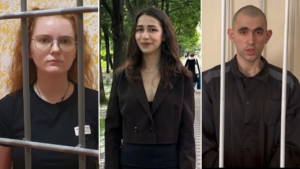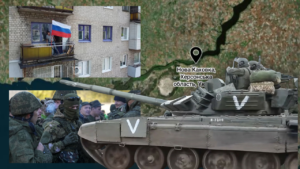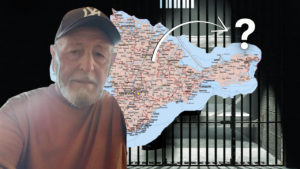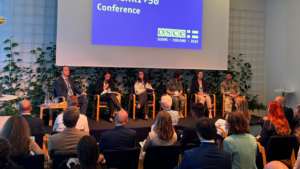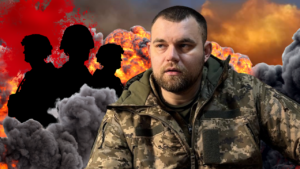MIHR discovered a torture chamber in Sumy Region: a victim recognized all of it
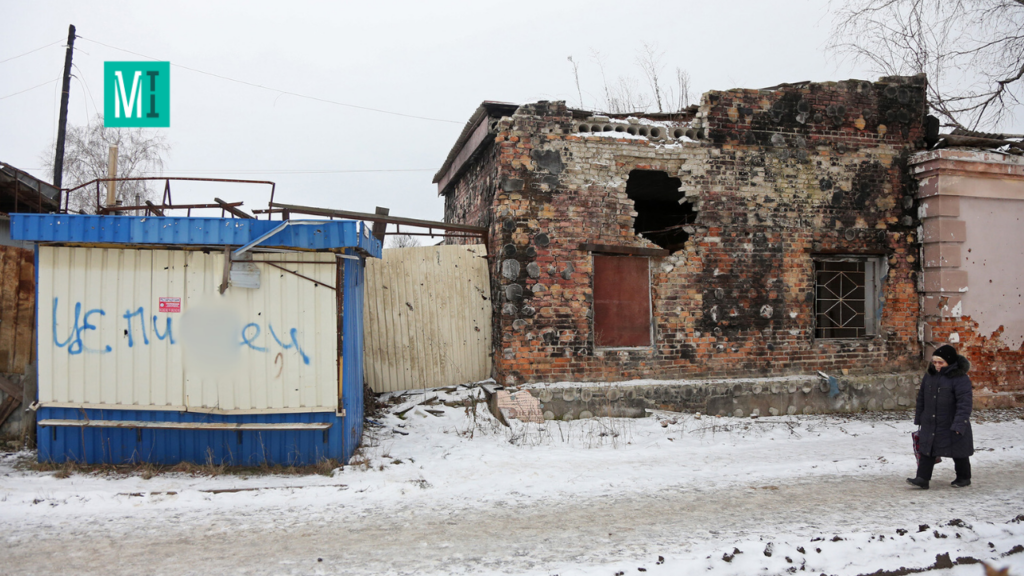
Boromlia and Trostianets are population centers in the Okhtyrka community of Sumy Region. At the start of the full-scale invasion by the Russian Federation, they came under occupation. The invaders kidnapped, tortured, and killed civilians. MIHR came here on a field mission and discovered five sites where Russians illegally detained civilians. In Boromlia, people were held on the premises of a local enterprise, and in Trostianets – at the railway station, brick factory, grain silo, and police department.
“Kadyrovites will turn you into mincemeat”
Anatoliy Yarosh is a retired district police officer, originally from the village of Hrebenykivka. He saw Russian military vehicles on March 8, 2022: about 50 vehicles were moving through the village and stopping in the gardens. When three armed invaders with red armbands broke into Anatoliy’s front yard, his wife hid him and his brother Oleksandr in a storage room. The Russians said: “Please excuse us. We thought no one lived here and wanted to park a command vehicle in the front yard. Since people live here, we’ll find someplace else.” Eventually, they parked their military vehicles at the gate to the Yarosh household. Anatoliy sent his wife and mother-in-law to the outskirts of the village and stayed home with Oleksandr.
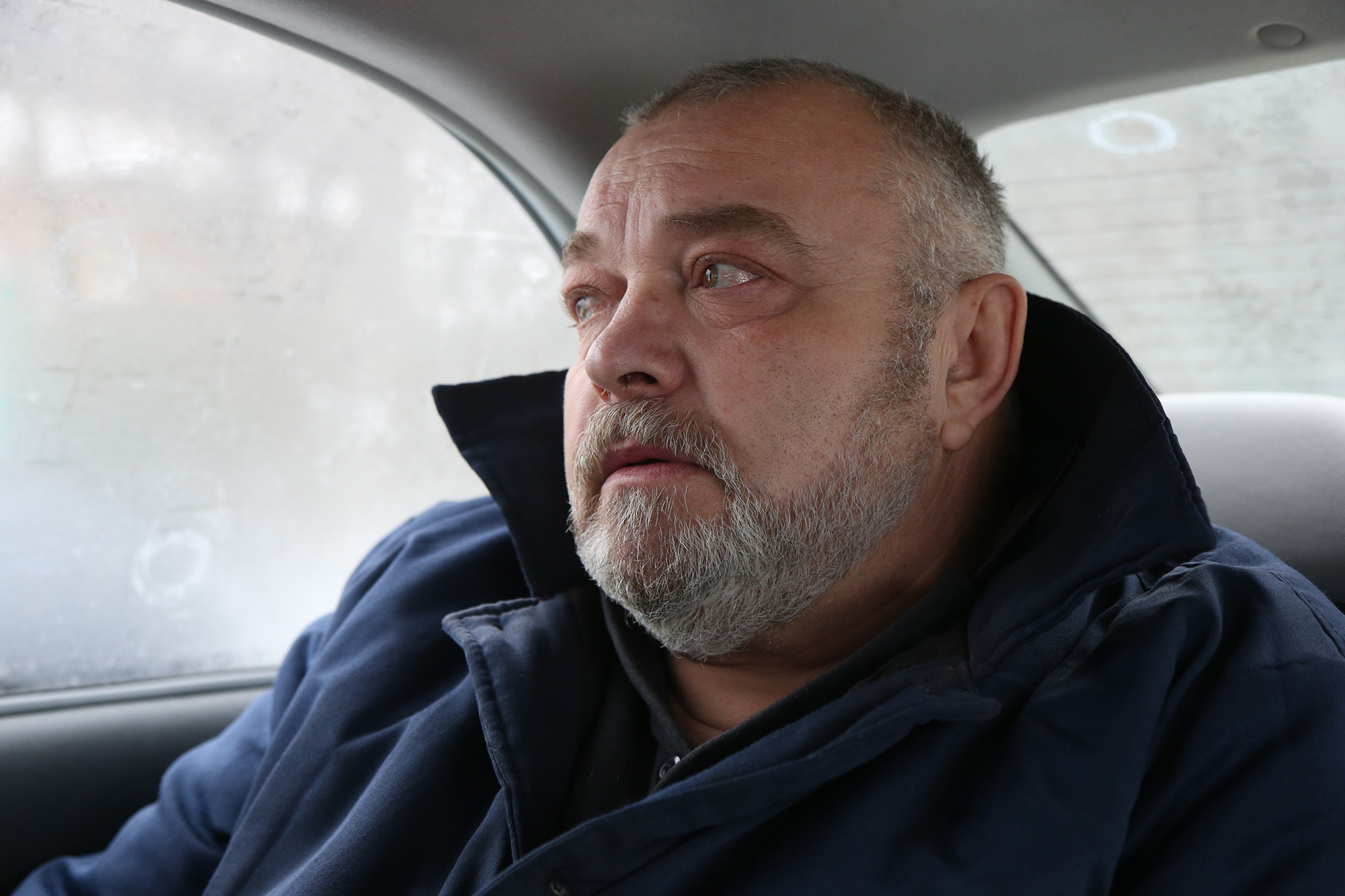
Anatoliy Yarosh. Photo by Victor Kovalchuk
At first, the Russians did not bother them, and one day even removed their vehicles. However, on March 14, eight invader broke into Anatoliy and Alexander’s home, pointed guns at them, started beating them and asking about their connections with the Armed Forces of Ukraine and Territorial Defense. For 40 minutes, the Russians searched them, beat them up, and fired shots near their ears, then took them to their command. There they were tortured. After that, they and three other people, including the godfather of Anatoliy’s child, were thrown into an unheated metal booth on the premises of one of the enterprises in Boromlia.
“We were put on our knees facing the snow. We stood like that for half an hour. It was cold, our faces in the snow, hands tied behind our backs. I turned my head a little only to get kicked in the face right away. Then they ordered us to give them phone numbers of our relatives who could be called and told where to pick up our bodies. I said I wouldn’t give the numbers.”
The men stayed for over two days in the metal booth. They were not given food, water, and were not allowed to stand up. A Russian sniper was positioned on the roof and fired shots when people tried to get up. Later, two more civilians were brought in, among them Valeriy Partala, deputy head of the Okhtyrka District Council. All the hostages were loaded into trucks and driven for five hours to the Russian village of Poroz.
“We arrived towards the evening. They started to take us out and immediately said, ‘Oh, fresh material. Now Kadyrovites will turn you into mincemeat.’ They took us to the restroom and then threw us in the cellar. It was warm. As far as I could tell, it was in some workshop.”
In addition to them, two other men were being held in the cellar. Anatoliy Yarosh was taken for interrogation by a Russian military man named Igor Anatolyevich. He asked about the man’s arrest, his connections with law enforcement. He claimed that someone had turned the man in. The invader promised to transfer the natives of Boromlia to a POW camp, but the following day they were returned to the metal booth in Boromlia. There, four more civilians from Bobryk (a village in Sumy Region), one with a gunshot wound to the leg, were brought in for the night.
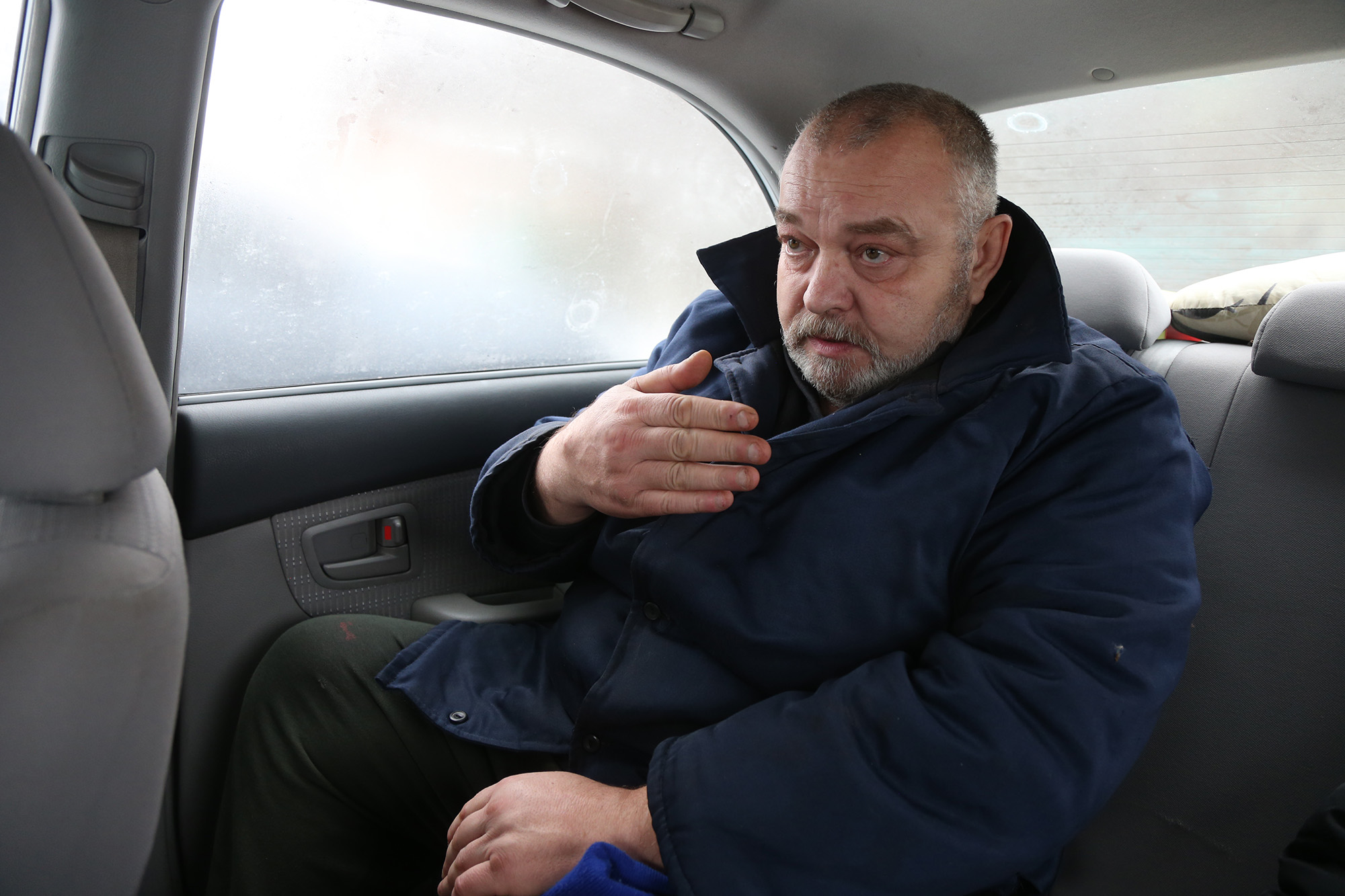
Russian military claimed they received a tip-off about Anatoliy Yarosh, which led to his detention. Photo by Victor Kovalchuk
“Then they brought a 64-year-old man. His hands were so tightly bound with a cable that his limbs were bleeding: blue and extremely swollen. Even the soldiers who received him said, ‘Why tie him up like that?’ The old man was accused of an attack against the military and murder. He had wounds to his buttocks from an automatic rifle. The old man stayed with us for two days before being taken away.
One day, the Russians allowed Anatoliy Yarosh, Valeriy Partala, and two other civilians to leave. They waited to hitch a ride. It was freezing cold. To warm up, they rubbed one another’s legs. A man gave them a lift to Hrebenykivka and said on parting, “Look, remember me, and know that natives of Donetsk pulled you out of hell.”
According to the Red Cross, the brother of Anatoliy’s wife and godfather of their child are still in captivity. Oleksandr is in a prison in Rostov.
The crime scene – Trostianets railway station
Another civilian hostage, Valentyn Baranik, is from Trostianets. During the occupation of the town, he stayed at home, having no means to leave. Moreover, the Russians did not want to let people out of the town. Those who tried to evacuate were held for three days in a forest on the premises of a resort. They were undressed, searched, and had their phones and dash cams seized.
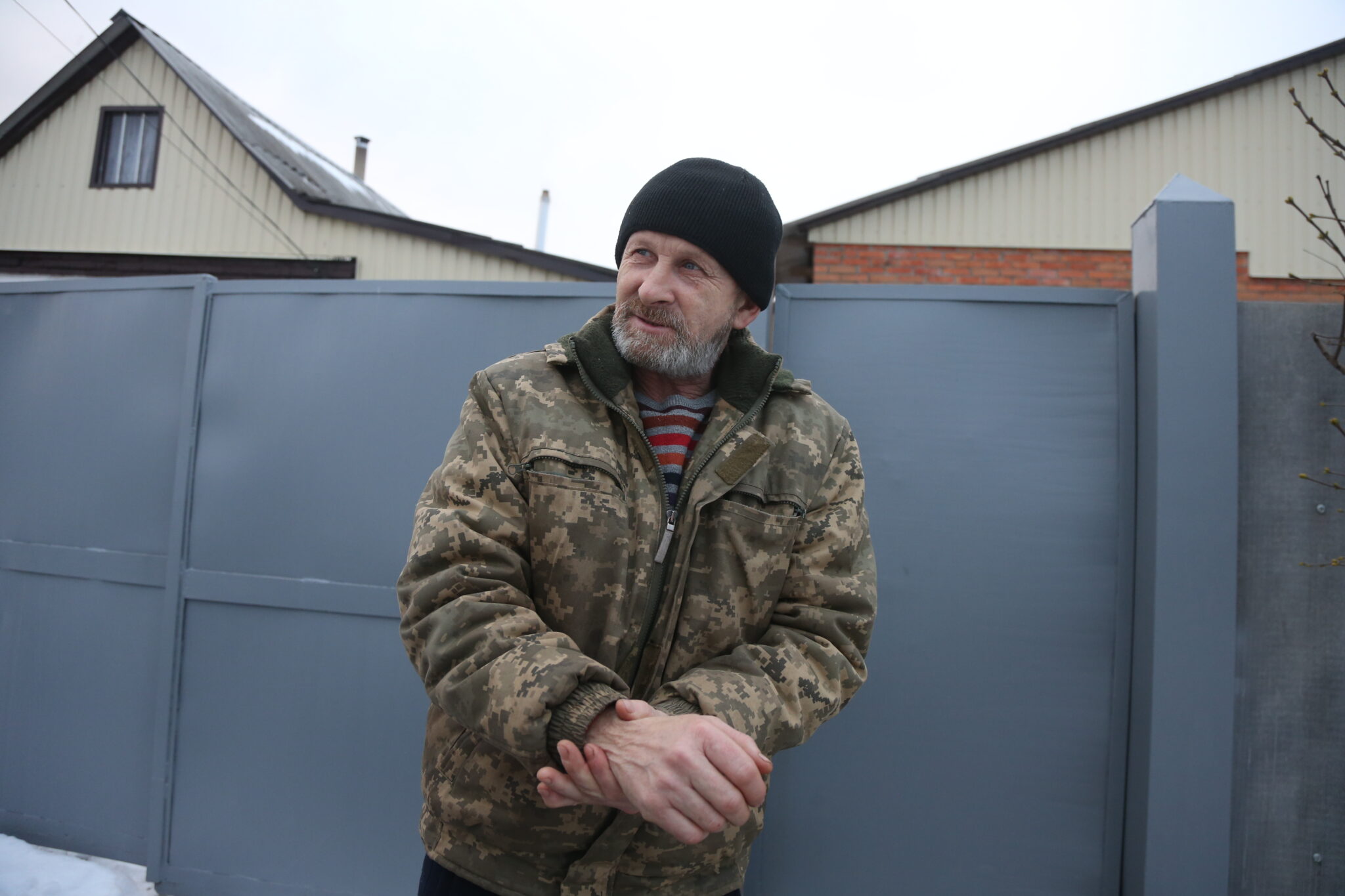
Valentyn Baranik. Photo by Victor Kovalchuk
The Russians detained Valentyn Baranik when he was carrying tobacco to his wife’s brother. The man was taken to the police, searched, and they took his money and a chain with a cross. Then his hands were tied with cable ties, a cap was pulled over his eyes, and he was held in a basement until morning. Then the man was taken to the railway station, where he was interrogated, accused of being a spotter, a partisan commander, and a mine sweeper. They asked where the military and veterans lived. According to the man, one of the invaders had a Caucasian accent. The Russians beat Valentyn Baranik, broke three of his ribs, shot him in a buttock, and fired shots near his ear.
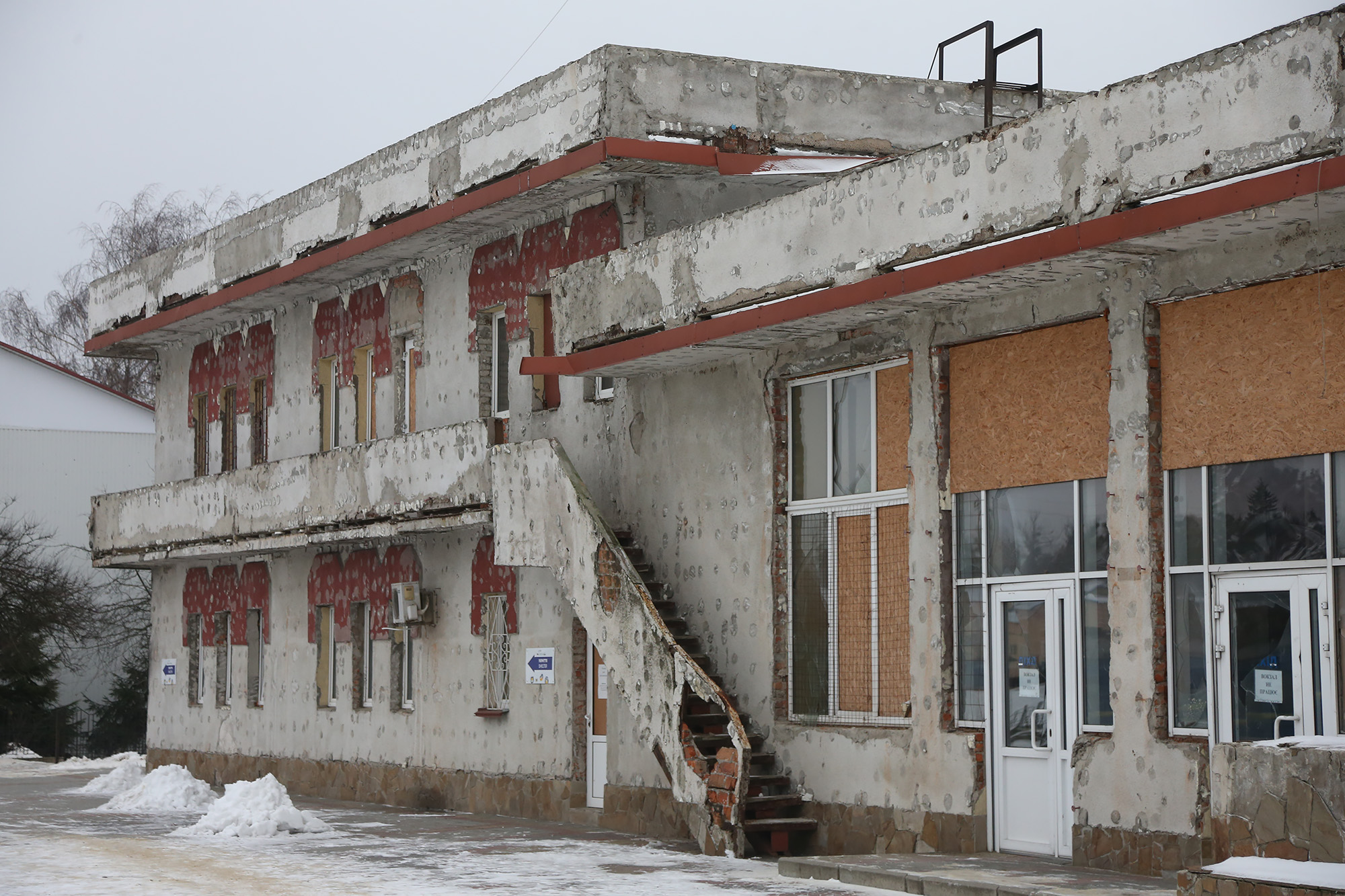
After the police department, Valentyn Baranik was held at the Trostianets railway station. Photo by Victor Kovalchuk
During MIHR’s field mission to Trostianets, a local woman, who asked not to be named, told that on one occasion the invaders brought a man to the station, and those who received him said, “Who did you bring? He’s about 55 years old. He’s not suitable for blood transfusion.”
Another witness, Olha Trypolska, who works as a train station superintendent, told MIHR that the walls in the station building, where Russian soldiers tortured Valentyn Baranik and others, were bloodstained. She also saw blood on the stairs through which they dragged people. MIHR fact finders visited this place. Even though the building was renovated after the de-occupation of Trostianets, a peculiar odor of blood still lingers there. The MIHR team also found Russian army rations, pieces of cable, and tape, similar to those used to bind the victims, according to the testimonies they gathered. In the building where Valentyn Baranik was held, there are traces of a brown liquid resembling blood.
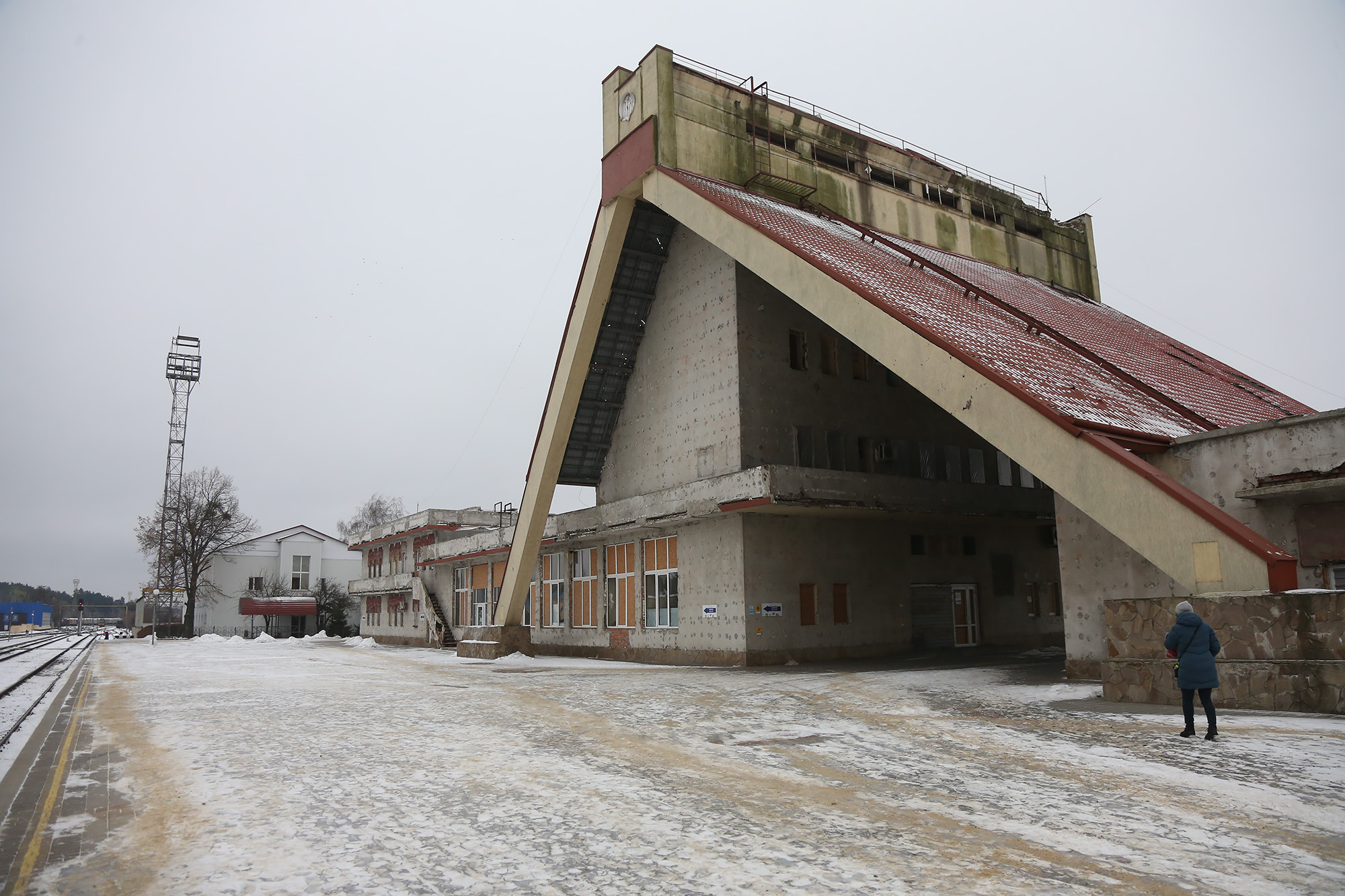
Trostianets railway station. Photo by Victor Kovalchuk
Boromlia: how MIHR found the torture chamber
From the train station building, the man was taken in the back of a truck to Boromlia, his hands and feet bound with cable. The Russians claimed that they found coordinates of their positions in Baranik’s phone, which he supposedly transmitted to the Armed Forces of Ukraine. He was then taken to a metal booth on the premises of a local enterprise, where a Russian officer interrogated Valentyn.
Baranik told MIHR that from the window of that building, he saw a white two-story building, and on the other side – a Russian army tent. However, he could not remember the exact location. MIHR fact finders offered to help him find the booth. Initially, Valentyn hesitated, as he had previously told law enforcement that he did not remember where he was held, and they refused to look for the place and never contacted him again.

MIHR fact finders and Valentyn searched for the place of his illegal detention. Photo by Victor Kovalchuk
Eventually, the man agreed to MIHR’s proposal to thoroughly explore the area. Notably, ahead this trip, our fact finders had already asked a local resident about where people had been detained in Boromlia. She directed us to a plot with a white two-story building.
However, at first, Valentyn Baranik took the MIHR fact finders to a different location, where he thought he had been held, but was mistaken. Then, together with the man, our team went to the enterprise mentioned by the local resident. Its territory is fenced with concrete blocks and has a gate. Upon entering, Valentyn recognized the red building of the enterprise and the metal booth with a hole instead of a window, where he and other civilians were illegally detained by the Russians.
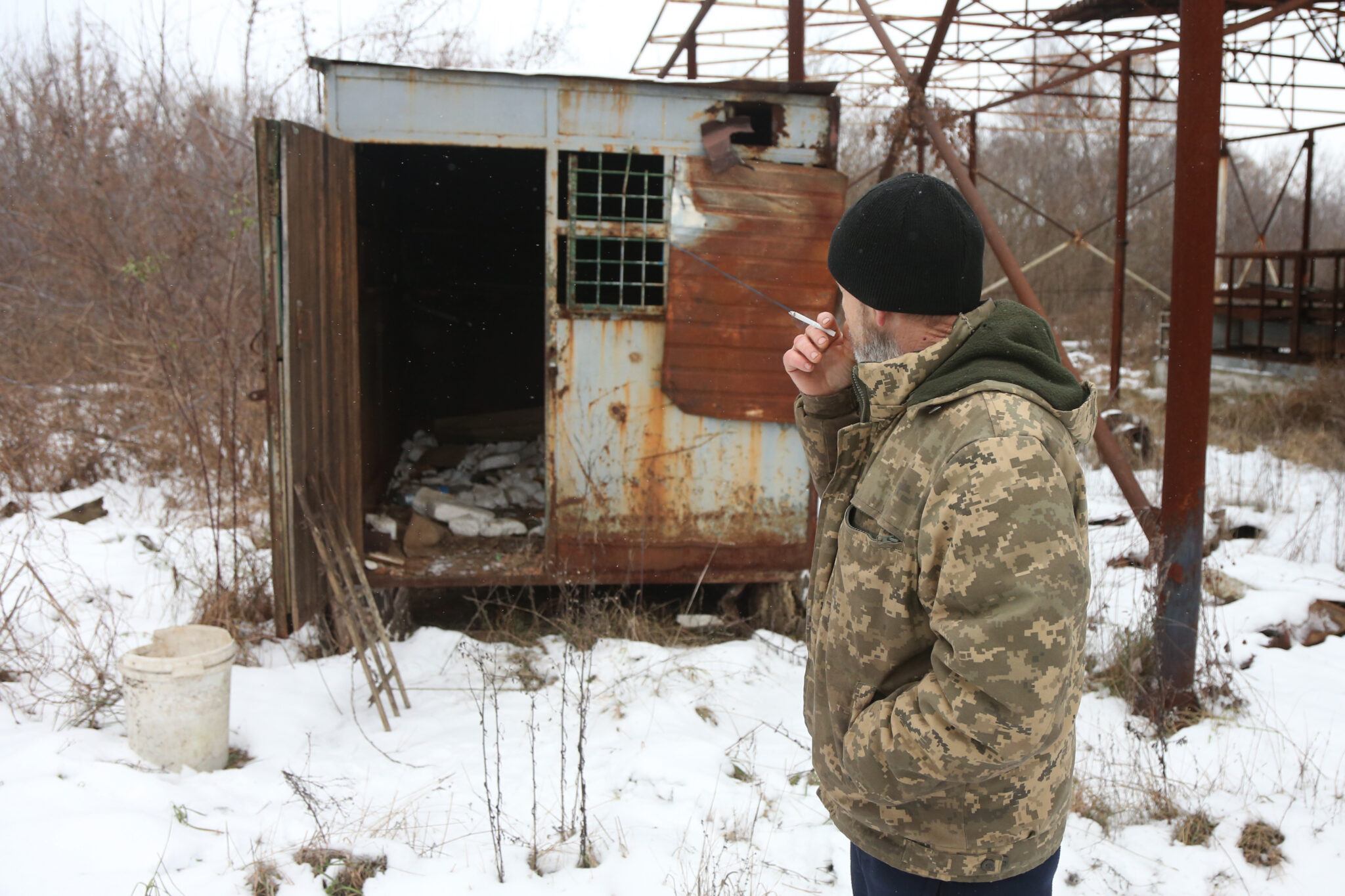
The metal booth in Boromlia, where the Russians held Valentyn Baranik. Photo by Victor Kovalchuk
MIHR fact finder Kateryna Chernata remarks that Baranik began talking about this place because after almost two years of searching and despair, thanks to MIHR, he finally found where he was held by the invaders.
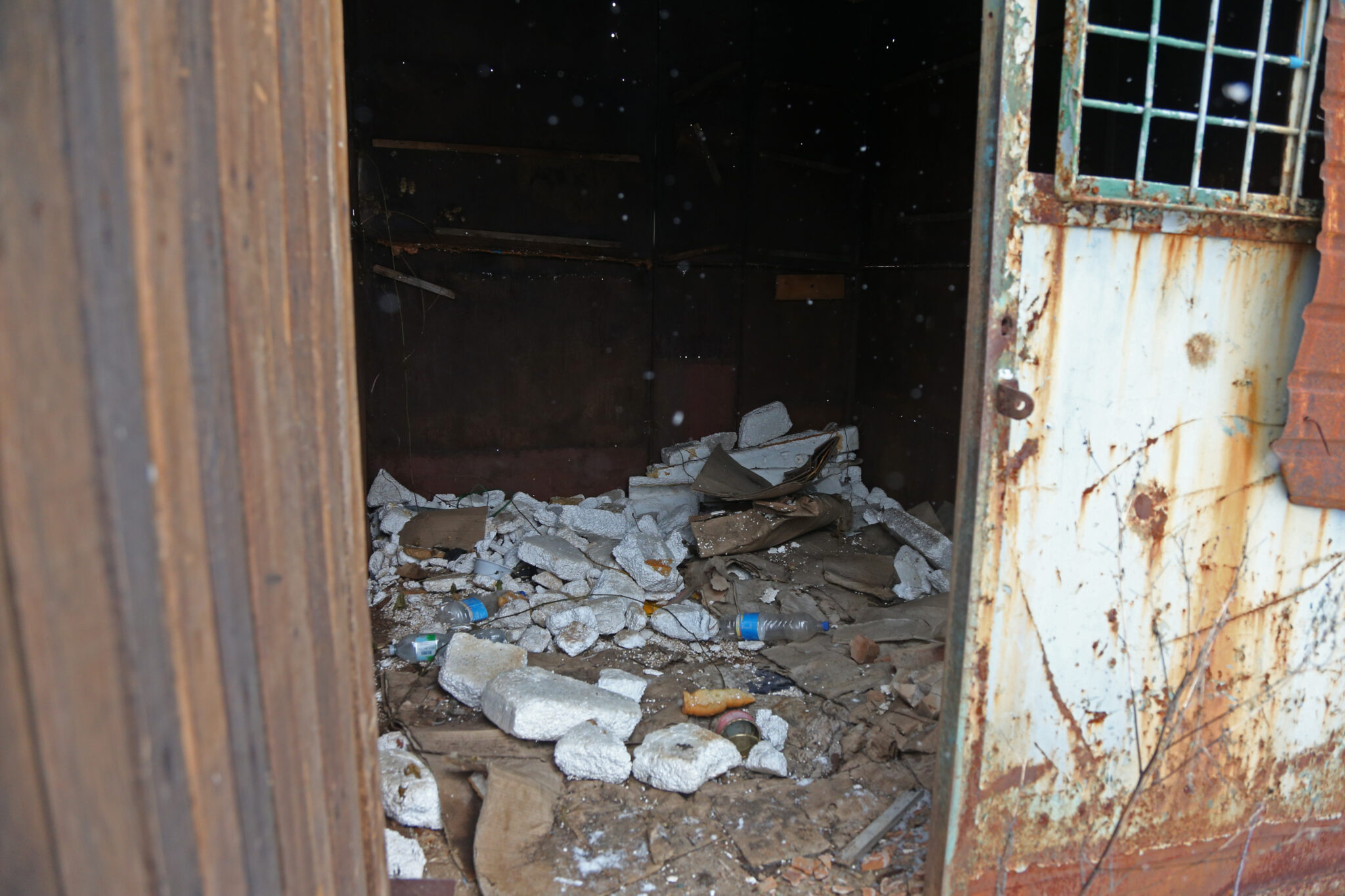
The place where Valentyn Baranik was held in Boromlia. View from inside. Photo by Victor Kovalchuk
In the booth, there was garbage and fragments of foamed plastic – Valentyn Baranik told how he lay on it during his illegal detention. Moreover, MIHR and Valentyn found old rags with brown stains resembling blood. The man also recognized a can of Russian canned meat, cable, and tape used to bind people. He also remembered the place where he was interrogated.
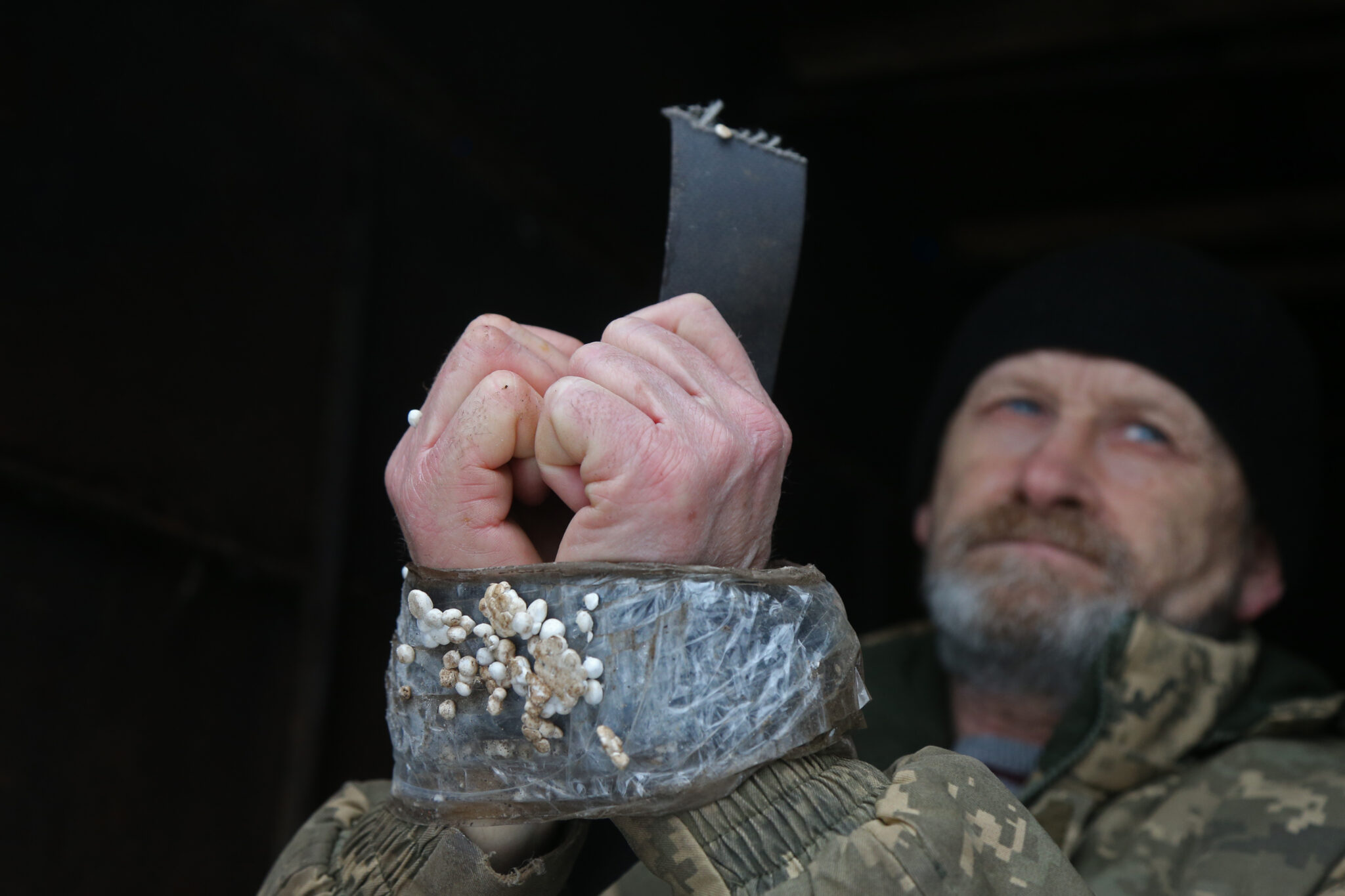
Valentyn Baranik demonstrates how Russian soldiers tied up hostages. Photo by Victor Kovalchuk
He said that he shared this booth with two other civilians: Oleksiy and Oleksandr. Later, Baranik and Oleksiy were transported in a BMP infantry fighting vehicle to Trostianets, where the men saw many dead civilians: some caught in the shelling, others killed by the invaders on suspicions of aiding the Armed Forces of Ukraine. Oleksandr’s fate remains unknown, although almost two years have passed since his abduction.
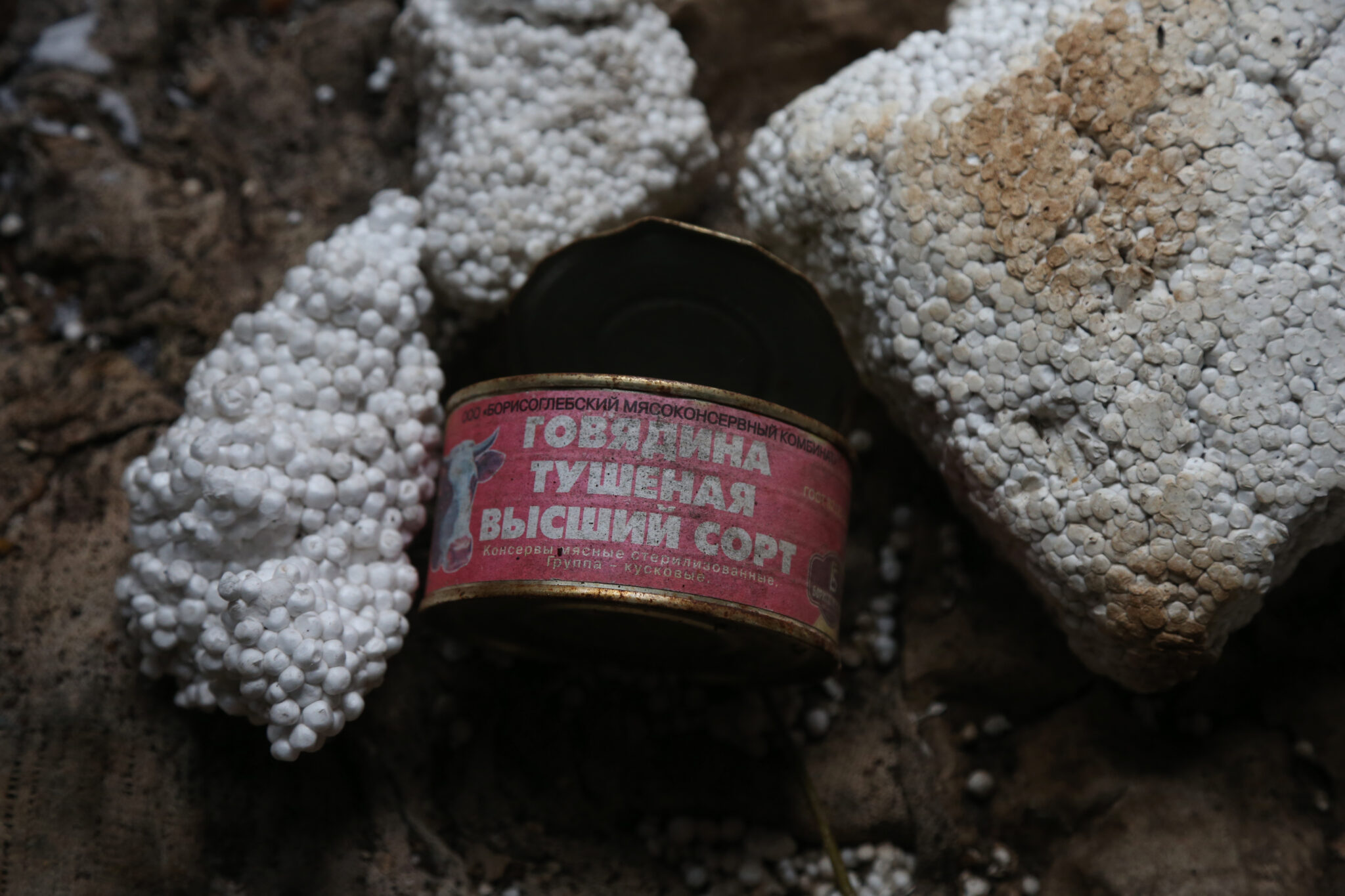
Garbage left behind by the Russian military. Photo by Victor Kovalchuk
Maryna Kulinich, MIHR journalist


